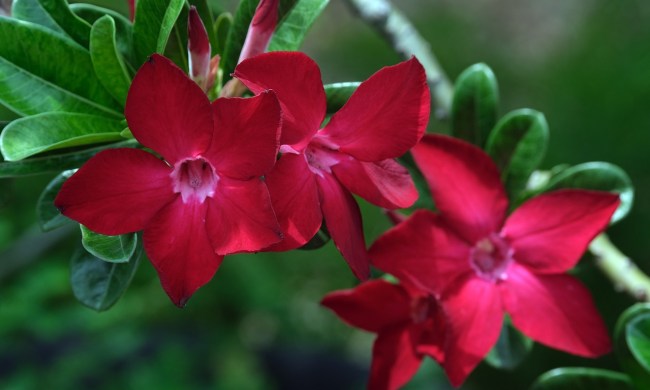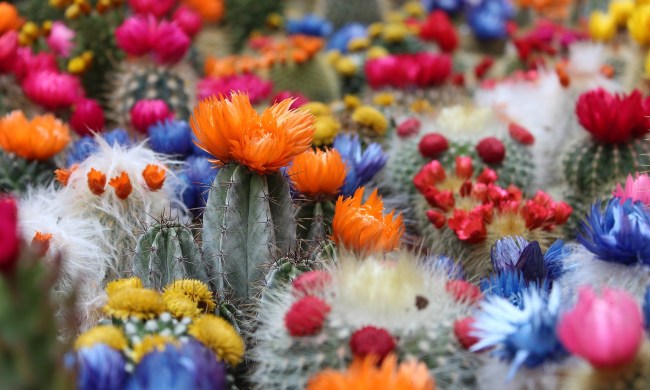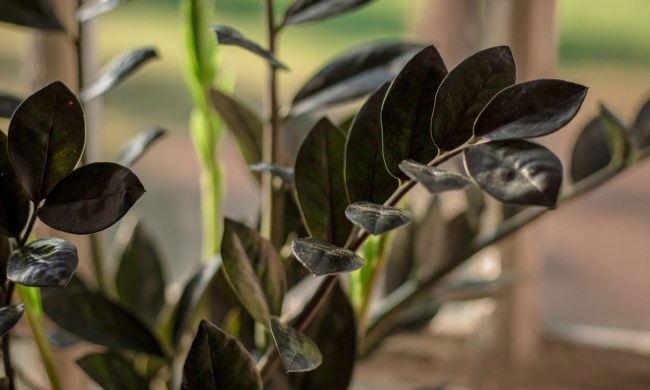Whether you call it common holly, Christmas holly, English holly, or just plain old holly, this striking plant with the bright red berries against deep green leaves just screams Christmas. The holly plant is a popular holiday tree or shrub (depending on the variety) that’s often used in garlands, wreaths, mantelpiece decor, and so much more. The berries give your home a vibrant pop of red to really accentuate the festive colors of the season. And hey, what’s more fun than decorating for the holidays with fresh greenery?
Although the English holly plant (Ilex aquifolium) is the most common variety, American holly (Ilex opaca) is another one you might see used in holiday greenery. Appearance-wise, there isn’t much of a difference; however, the English holly plant has a slower growth rate and is native to the U.K. while the American holly is a medium grower native to parts of the U.S. Really, you can’t go wrong with growing either.
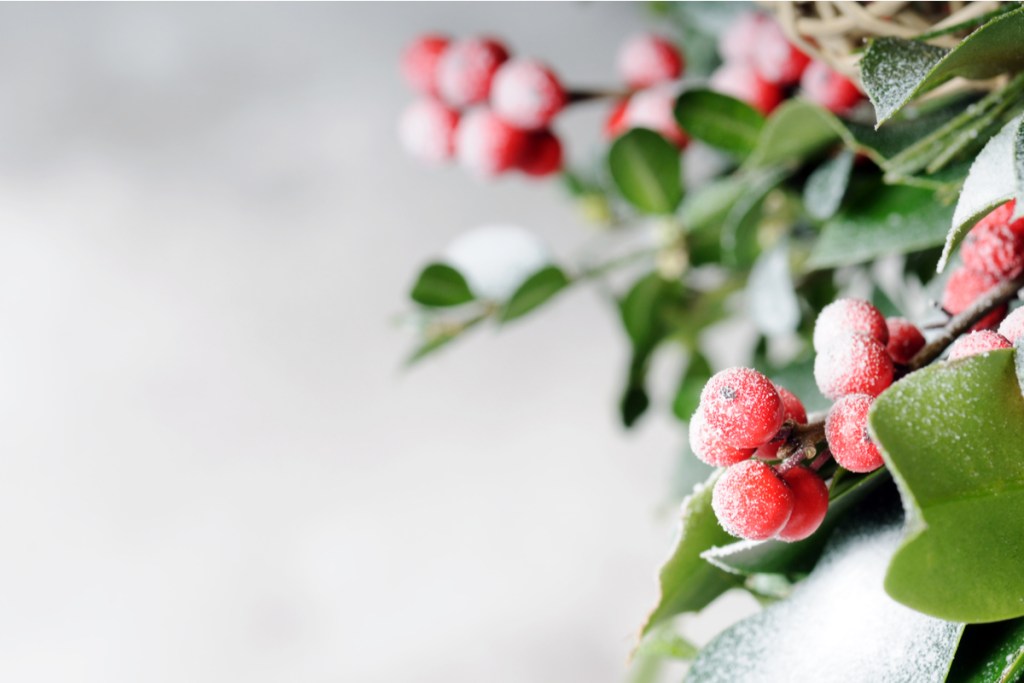
How did holly become part of the holidays?
The origins of the holly plant are rooted in Pagan culture. People once used in formal gardens as a signature plant, especially in the Victorian area. Because the holly plant has such a high tolerance to pollution, it was beloved for its versatility and ability to be planted in industrial locations.
But how did it get an association with Christmas and the holiday season? It was once considered a sacred plant by druids, being one of a few plants that stayed green and vibrant during the colder months. They hung the plant in their homes to invite good luck and protection — and the Christians adopted the tradition. Once they did, the symbolic nature of the plant changed to reflect Christian beliefs.
In Christianity, holly is said to symbolize two things: The thorny leaves are the crown of Christ, and the crimson berries reflect the blood he shed on the cross. Today, holly is used throughout the holiday season in garlands and wreaths hung on doors and in homes to mark the beginning of the festive season.
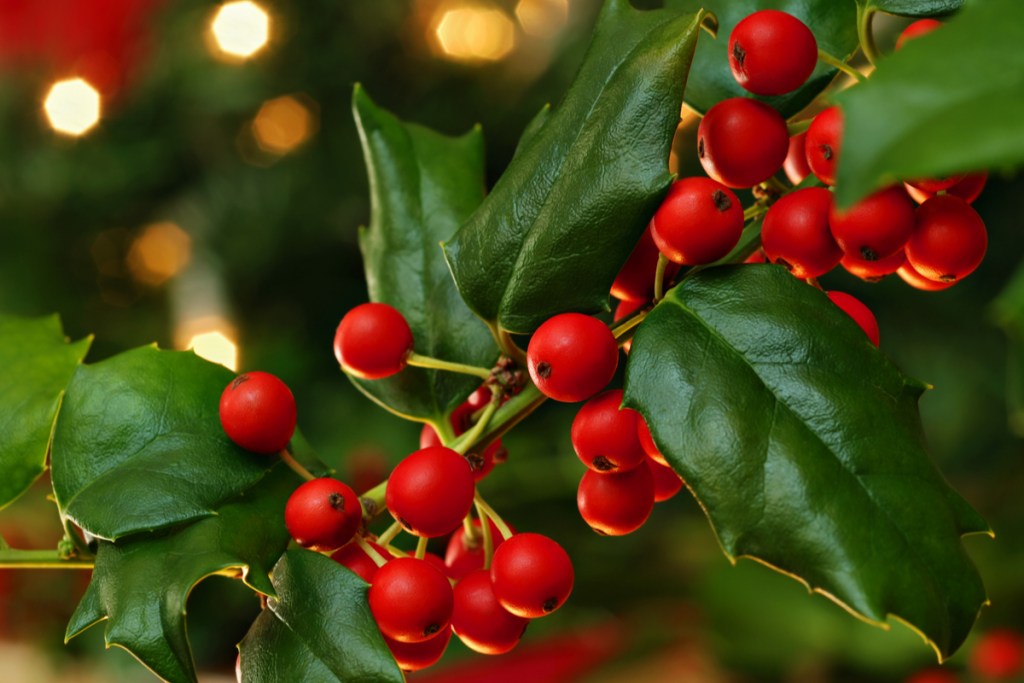
Caring for your holly plant
The care requirements and needs of the English holly plant and the American holly plant are quite similar, so knowing how to care for one will help you learn how to care for both; it helps that they’re in the same family of plants. For this guide, let’s look at English holly.
English holly plants are slow growers, so they’ll need some time to get established in your garden — and this isn’t necessarily a bad thing. With this plant comes delayed gratification, and the reward you’ll have for tending to it and getting it settled in is that it will thrive and live alongside you for decades.
English holly doesn’t like extreme temperatures, so it should only be grown outdoors in USDA hardiness zones 5 through 8, avoiding both extreme cold and extreme heat. Hard frosts can kill off healthy foliage and branches, and a lot of heat could cause sunburn and leaf drop. Make sure that where you live doesn’t have any kind of extreme winters or summers, and you should have no trouble keeping your English holly alive.
Light needs: Full sun to partial shade
Water needs: Prefers to be moist during warmer seasons and drier during colder seasons as it’s a relatively drought-tolerant plant
Soil needs: Can survive in a variety of soil types as long as they’re well-draining
Is holly poisonous?
Unfortunately, the beloved festive plant is poisonous to both humans and animals, which perhaps is unsurprising given the vibrant red of the berries. If ingested, the berries can cause dehydration, diarrhea, drowsiness, and vomiting — and it takes as few as two to cause these symptoms.
If you have children or pets that like to eat plants, it’s best to keep holly up out of reach. And even then, the berries on fresh holly dry out quickly indoors and fall to the ground, where they can easily be picked up and eaten. If there’s any concern, it’s best to opt for the fake version instead, which is just as beautiful (and can be used year after year).
Is the holly plant invasive?
When left to its own devices, the holly plant is considered invasive because it competes with other native plants in the area; however, when grown in a garden or containers, you’ll be pruning and maintaining the plant. Holly doesn’t grow fast, so you don’t have to worry about waking up one day to find that it’s taken over your entire yard.
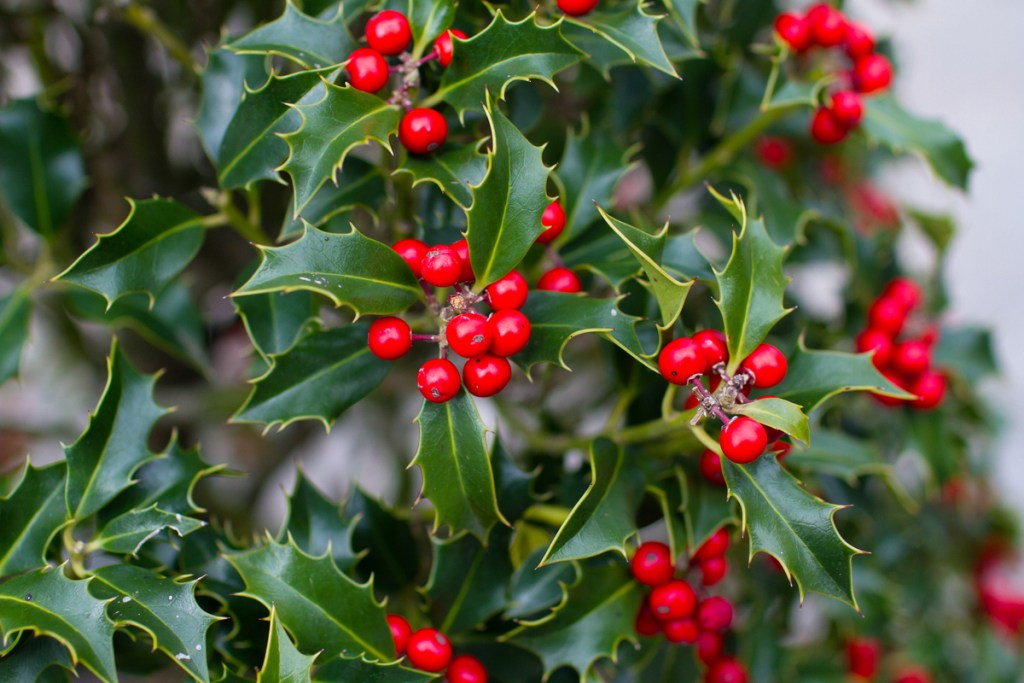
Which holly plant is the one you see in all the decorations?
Although the English and American hollies have a similar appearance, the English holly is the one most commonly used in holiday decorations like wreaths and centerpieces — perhaps because the American holly has more requirements for producing berries.
If you want to grow American holly to use in bouquets and tree trimmings when the holiday season rolls around, you’ll need to plant at least one female plant and one male plant (as opposed to a singular English holly plant). The good news is that there are hundreds of American holly cultivars, so you won’t struggle to find them.
But why two? The female American holly plant is the one that produces the berries while the male holly plant is needed for fertilization and has to be planted within 30 to 40 feet of the female plant. Luckily, it isn’t a one-to-one ratio. A single male plant can fertilize multiple female holly plants.
If you only have room for one holly plant in your garden, though, it’s best to opt for the English variety. Holly plants look as equally lovely in containers as they do in garden beds, so even those with smaller outdoor spaces can grow some to enjoy the festive look of their berries during the holiday season.
